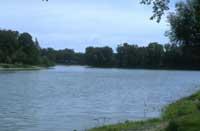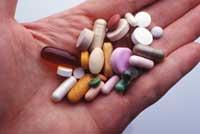Drugs, new type of pollution in rivers and streams
More and more drugs are being taken to fight the flu, cholesterol, or any other disease. Antibiotics, hormones, sedatives, drugs used in chemotherapy to fight cancer… is an endless list. The problem is that medicines taken by humans or animals end up in the environment, more specifically in the waters of rivers or streams. And once within the water cycle they remain there. It is known that the patient (human or animal) expels between 50 and 90% of the drugs, the rest is poured as a metabolite, that is, as a chemical that is generated from the interaction between the body and the drug.

The problem of the remains of drugs from rivers and streams is ancient, but in the conviction that it would affect the interests of the pharmaceutical industry, it was known in the 1990s. In fact, the first study that discovered drug remains in a river was conducted in 1976, but for the first time the results were published in the journal Life Science twenty years later, in 1997. This study was conducted at the Big BLue Rivers River Treatment Plant (Kansas City). However, it was not the only such research published in the 1990s.
In 1992 a group of German researchers identified clofiboric acid in water. Clofibric acid is used in anti-cholesterol drugs and is close to the known herbicide 2-4 D. Since then, clofiboric acid and other drugs have been found in research carried out in lakes, streams and rivers in Germany, Sweden and Denmark, as well as in the North Sea. But there have also been amazing results: The findings in the North Sea are not clues, but large quantities! According to researchers, in the North Sea there are 48-96 tons of clofiboric acid, and in the Pu of Italy and in the Danube of Germany there are also remnants of this acid.
However, the water from the rivers and streams, after passing through the treatment plant, reaches the sources of the homes. At the moment, no special treatments are performed to eliminate drug residues, so in some cities the problem is quite serious. For example, in the water of several Berlin households, the concentration of this acid is 10-165 per million. In addition, they warn that in addition to this acid there are more medicines. According to German researchers, in any sample of water there are remnants of 30-40 different drugs, but if they are found, of course, it should take time to perform an appropriate analysis.
A global problem
The results of a published study have revealed that in the rivers and streams of the United States there are remnants of 95 chemical elements used in drugs. Analgesics, human sex hormones, caffeine and a nicotine derivative have been found, among others.
For the research, 139 streams and rivers have been analyzed, finding that 80% of the samples contain one or more organic compounds. According to scientists, "we have to look for it and as we have not looked for this type of element in water analysis so far, we do not know when that type of pollution is."

In general, the level of concentration found is low, but scientists fear that derived from these elements more sustainable and harmful to the environment. The main characteristic of many drugs is their resistance, which are maintained for quite some time to exert a therapeutic effect. The problem is that they still have sufficient capacity to influence the incorporation into the water cycle.
The doses found are very small and do not pose a risk to the environment according to scientists. But quick conclusions may have been drawn, as there are still many questions to answer. Among other things, rumors have spread that this event may contribute to the bacteria becoming increasingly resistant to antibiotics, although nothing has yet been proven.
American scientists are more concerned about consumer health, although at this level the questions are more than answers.
Many pending points
All scientists and politicians agree on the XXI. The main problem of the 20th century is access to drinking water. Well, if you look at the new contamination caused by drugs, you can say that the situation is complicated. Although the problem is relatively new, the abusive use of drugs can be considered. Also, have you ever thought, for example, where the thousands of tons of waste from microbotic hospitals end? And drugs with expiry date exceeded? So, will so many medications only harm the health benefit?
Published in the supplement Estación de Gara.
Buletina
Bidali zure helbide elektronikoa eta jaso asteroko buletina zure sarrera-ontzian











